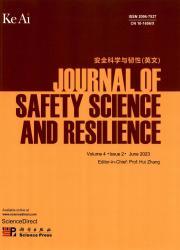Ada-GCNLSTM: An adaptive urban crime spatiotemporal prediction model
IF 3.4
Q1 PUBLIC, ENVIRONMENTAL & OCCUPATIONAL HEALTH
引用次数: 0
Abstract
Accurate crime prediction is crucial for the proactive allocation of law enforcement resources and ensuring urban safety. A major challenge in achieving accurate predictions lies in identifying generalized patterns of criminal behavior from spatiotemporal features in crime data. Additionally, the inherent randomness and volatility of crime data at the spatiotemporal level introduce noise, which can mislead prediction models. While many effective spatiotemporal crime prediction methods have been proposed, most overlook this issue, reducing their ability to generalize. In this paper, we introduce a novel deep learning-based model, adaptive-GCNLSTM (Ada-GCNLSTM). Specifically, in the spatial feature extraction module, we enhance the model's ability to capture crime spatial distributions by leveraging graph convolutional networks to model spatial dependencies in conjunction with the maximum mean discrepancy to extract the universal features of crime data. We then incorporate a memory network based on long short-term memory network to capture the underlying relationships between temporal features. Through extensive experiments, our model demonstrates an average improvement of 11.7% in mean absolute error and 2.7% in root mean squared error across the three datasets, outperforming the best baseline model. These results underscore the effectiveness of our approach in enhancing crime prediction accuracy.
Ada-GCNLSTM:自适应城市犯罪时空预测模型
准确的犯罪预测对于积极配置执法资源和保障城市安全至关重要。实现准确预测的一个主要挑战在于从犯罪数据的时空特征中识别犯罪行为的一般模式。此外,犯罪数据在时空水平上固有的随机性和波动性会引入噪声,这可能会误导预测模型。虽然已经提出了许多有效的时空犯罪预测方法,但大多数方法都忽略了这一问题,从而降低了它们的泛化能力。本文介绍了一种新的基于深度学习的自适应gcnlstm (Ada-GCNLSTM)模型。具体来说,在空间特征提取模块中,我们通过利用图卷积网络来建模空间依赖关系,并结合最大平均差异来提取犯罪数据的普遍特征,从而增强了模型捕捉犯罪空间分布的能力。然后,我们结合了一个基于长短期记忆网络的记忆网络来捕捉时间特征之间的潜在关系。通过大量的实验,我们的模型在三个数据集上的平均绝对误差平均提高了11.7%,均方根误差平均提高了2.7%,优于最佳基线模型。这些结果突显了我们的方法在提高犯罪预测准确度方面的有效性。
本文章由计算机程序翻译,如有差异,请以英文原文为准。
求助全文
约1分钟内获得全文
求助全文
来源期刊

安全科学与韧性(英文)
Management Science and Operations Research, Safety, Risk, Reliability and Quality, Safety Research
CiteScore
8.70
自引率
0.00%
发文量
0
审稿时长
72 days
 求助内容:
求助内容: 应助结果提醒方式:
应助结果提醒方式:


